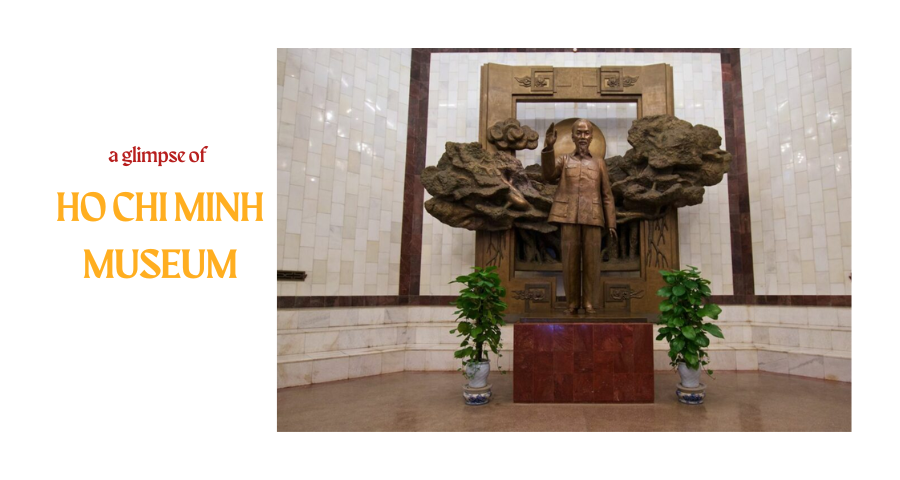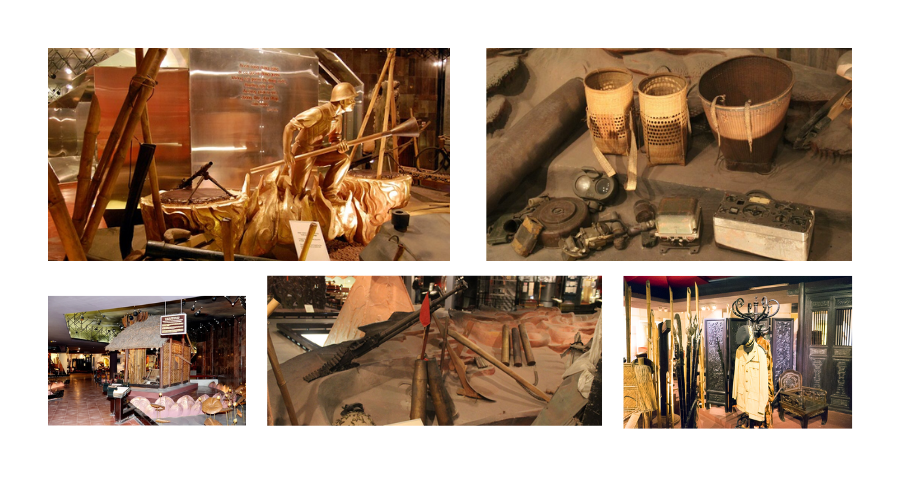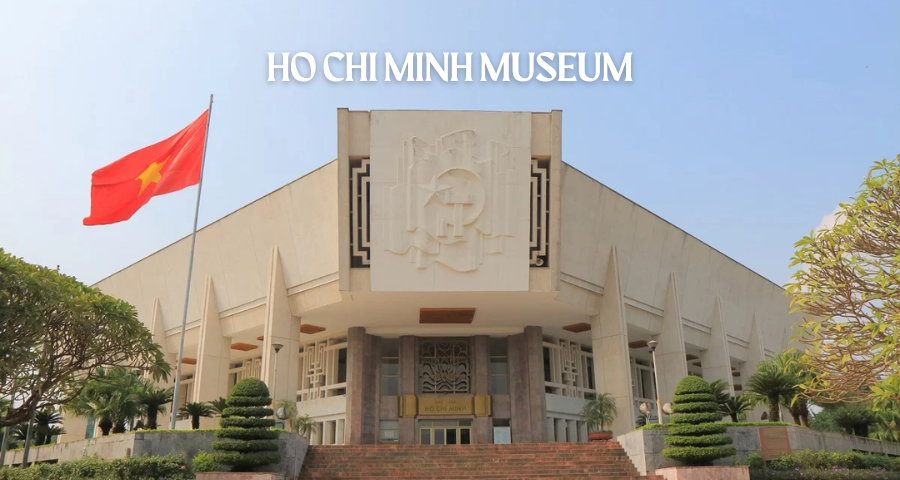Ho Chi Minh Museum: The Life and Legacy of Ho Chi Minh
Dive into Ho Chi Minh’s history at the Ho Chi Minh Museum, where you can explore captivating exhibits and learn about this pivotal figure in Vietnamese history. Don’t miss out on this essential stop among the top things to do in Hanoi!
Overview of Ho Chi Minh Museum
Location: 19 Ngoc Ha Street, Doi Can Ward, Ba Dinh District, Hanoi
History: The Ho Chi Minh Museum was established to honor the life and legacy of President Ho Chi Minh, the founder of modern Vietnam. Construction began in 1985, and the museum officially opened its doors on May 19, 1990, coinciding with the 100th anniversary of Ho Chi Minh’s birth. The museum showcases various aspects of his life, from his childhood to his revolutionary activities and contributions to Vietnam’s independence.
Historical Value: The museum holds significant historical value as it preserves the memory of Ho Chi Minh’s ideals, struggles, and achievements. It serves as a key educational resource, helping visitors understand the impact of his leadership on Vietnam’s history and the global revolutionary movement. The artifacts, documents, and exhibits within the museum highlight Ho Chi Minh’s role in shaping the nation and inspire future generations to appreciate the principles of independence and self-determination.
The Life of President Ho Chi Minh
President Ho Chi Minh, born Nguyen Sinh Cung (1890-1969), was a great leader of the Vietnamese nation. He was born into a Confucian family in Nghe An province and developed a strong sense of patriotism and a desire to fight for national liberation from colonial rule from an early age. In 1911, he began his journey to seek a way to save the country, traveling through various countries around the world to learn about revolutionary ideas and political theories.
In 1941, Ho Chi Minh returned to Vietnam and led the revolutionary movement to achieve independence. On September 2, 1945, he delivered the Declaration of Independence at Ba Dinh Square, establishing the Democratic Republic of Vietnam. With his revolutionary ideology and moral integrity, he guided the nation through the struggles against French colonialism and American imperialism, leaving a significant legacy for the cause of national liberation and nation-building.
Ho Chi Minh’s life is a shining example of determination, deep love for the country, and self-sacrifice for the independence and freedom of the nation.
Key Areas of Ho Chi Minh Museum

Zone 1 of the Ho Chi Minh Museum focuses on the personal life and revolutionary career of President Ho Chi Minh. This area guides visitors through his journey from childhood in Sen Village, his early years, to his travels around the world seeking a path to liberate the nation. The main topics include Ho Chi Minh’s efforts in establishing the Communist Party of Vietnam and his struggle for independence. Here, visitors can gain a deeper understanding of Ho Chi Minh’s perseverance, patriotism, and revolutionary vision as he led the country.
Zone 2 highlights Vietnam’s resistance under the leadership of President Ho Chi Minh. The central theme focuses on the fight for independence and the process of national reunification. This area showcases major battles, strategic decisions, and the sacrifices made by the Vietnamese people under Ho Chi Minh’s guidance. Visitors will gain deeper insights into the indomitable spirit of the nation and the crucial role that Ho Chi Minh played in achieving victory for the country.
Zone 3 explores the influence of global historical events on Ho Chi Minh’s revolution and Vietnam. This section illustrates that Ho Chi Minh was not only a national leader but also a figure of significant global impact. His revolutionary career was shaped by Marxist-Leninist ideologies and international liberation movements. Here, visitors will understand the connection between Vietnam and worldwide revolutionary movements, as well as Ho Chi Minh’s global vision.

Things to Do at Ho Chi Minh Museum
- Explore the Exhibits: Visit various zones detailing Ho Chi Minh’s life and Vietnam’s history through displays and artifacts.
- Learn About Ho Chi Minh: Discover his personal and political journey through interactive exhibits and photographs.
- Visit the Outdoor Area: Enjoy the museum grounds, featuring sculptures and memorials dedicated to Ho Chi Minh.
- Join Guided Tours: Gain deeper insights through guided tours of the museum’s exhibits.
- Engage with Multimedia Presentations: Experience videos and audio recordings for an immersive understanding of Ho Chi Minh’s life.
- Check for Workshops: Participate in educational workshops or lectures about Ho Chi Minh and Vietnamese history.
- Take Photos: Capture memories in front of significant exhibits and sculptures.
- Visit the Gift Shop: Find souvenirs, books, and memorabilia related to Ho Chi Minh.
- Enjoy the Peaceful Atmosphere: Reflect on the exhibits in the museum’s tranquil environment.
- Utilize the Library: Access books and documents for in-depth research on Ho Chi Minh and Vietnam’s history.
My Personal Experience and Review
During my visit to the Vietnam National Museum of History, I was struck by the depth of the exhibits, which covered everything from ancient civilizations to modern-day Vietnam. The artifacts were beautifully displayed, offering a unique glimpse into the country’s rich past.
I particularly enjoyed the sections on ancient dynasties and Vietnam’s resistance movements. However, I felt that more English translations would have made the experience even more immersive for non-Vietnamese speakers.
Overall, it was an enriching visit that deepened my appreciation for Vietnam’s history. Highly recommended for anyone interested in culture and history!
Practical Information for Visiting Ho Chi Minh Museum
- Opening Hours: 8 AM to 5 PM
- Ticket Prices:
- Entry fee: 30,000 VND
- Additional charge for photography equipment: 20,000 VND per camera
- International visitors also pay the standard ticket price of 30,000 VND.
Travel Tips and Advice
- Dress Code: Dress modestly and remove hats while inside the museum.
- Follow Directions: Always follow the marked paths and give priority to the elderly and disabled.
- Prohibited Items: Do not bring weapons, explosives, flammable materials, toxic substances, or pollutants into the museum.
- No Touching: Refrain from touching the exhibits and museum equipment.
- Clean Environment: Avoid littering, eating, or smoking within the museum premises.
- Luggage Rules: Personal belongings such as suitcases, backpacks, and handbags must be left at the museum’s designated luggage storage area.
- Supervision of Children: Children under 10 must be accompanied by an adult or tour organizer.
- Photography: For inquiries regarding photography or filming, contact the reception desk.
- Guide Services: For a guided introduction to the museum, reach out to the Education Department.
Nearby Attractions
Ho Chi Minh Mausoleum (0 km)
A 10-minute drive away, this iconic landmark is the resting place of Vietnam’s revered leader, Ho Chi Minh. Ba Dinh Square and the surrounding gardens are also must-visit spots.
Vietnam Museum of Ethnology (3.26 km away)
A short drive from Hoa Lo Prison, this museum highlights the cultural diversity of Vietnam’s 54 ethnic groups with exhibits of traditional clothing, crafts, and reconstructed houses. A great spot to explore Vietnam’s ethnic heritage.
National Museum of Vietnamese History (0.83 km away)
Built between 1925 and 1932, this impressive museum was once home to the École Française d’Extrême-Orient. It showcases Vietnam’s rich history through a vast collection of artifacts from prehistoric times to the modern era.
Hoa Lo Prison (1.5 km way)
This former prison offers a glimpse into Vietnam’s revolutionary history and is a poignant reminder of the country’s struggles for independence.
Vietnam Women’s Museum (1 km away)
This museum showcases the role of women in Vietnam’s history and culture through fascinating exhibits.
Conclusion
Visiting the Ho Chi Minh Museum is a unique opportunity to explore the life and legacy of one of Vietnam’s most significant leaders. The museum offers engaging exhibits and educational workshops, making it a must-visit for anyone interested in Vietnamese history.
Plan your visit to the Ho Chi Minh Museum today! Discover the rich heritage of Vietnam and gain insights into its past. Don’t miss this chance to experience history firsthand!

